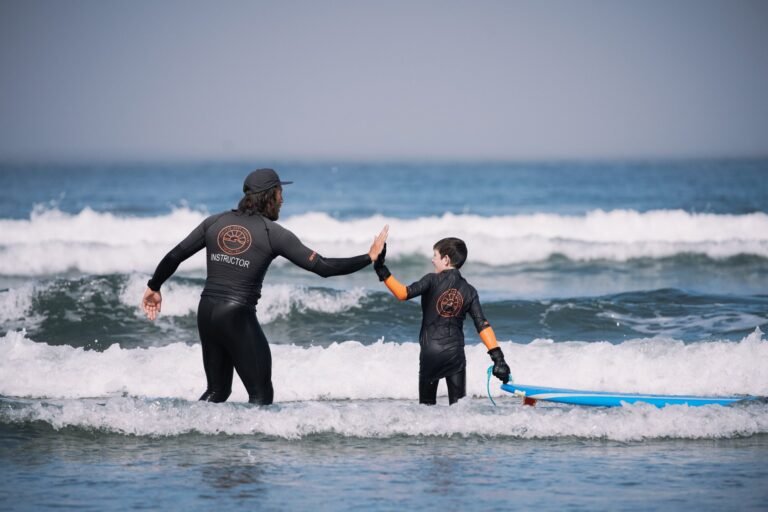Cape Scott Provincial Park is a rugged coastal rainforest located on the northwest tip of Vancouver Island.
History records that this region was first inhabited by the Kwakwaka’wakw people, formerly known as the Kwakiutl. Settlement attempts by hardy Danish pioneers in 1897 and 1910 were defeated by violent winds and rainstorms. The park was established in 1973, and is named for Cape Scott, the site of the lighthouse that has safely guided mariners since 1960.
Cape Scott Provincial Park is a wilderness area, preserving a truly magnificent area of coastal British Columbia. Visitors to the 21 849-hectare park can expect to find little development except trails. The park is characterized by 40 miles (64 km) of scenic and rugged ocean frontage from Nissen Bay in the north to San Josef Bay in the south. Rocky promontories and jagged headlands are scattered along the remote and wide sandy beaches. Nels Bight is the most impressive of the 9 beaches in the park, at 2,400 metres long and over 200 metres wide!
The highest point in Cape Scott Provincial Park is Mount St. Patrick overlooking San Josef Bay, which rises 415 metres above sea level. Eric Lake in the southeast is the largest body of fresh water in the park, at 44 hectares. Hansen Lagoon, which cuts deep into the park from Hansen Bay, is an important stopover for Canada Geese and waterfowl travelling the Pacific Flyway migratory route.
Upland areas of the park contain a variety of flora and fauna and are forested with red and yellow cedar, lodgepole pine, hemlock and true fir. Various species of birds exist along the coastline and the open uplands of the park protect larger mammals, including deer, elk, wolves, bear, cougar and sea otter.
Visitors to Cape Scott should be well prepared for adverse weather conditions – all year round. Annual rainfall is between 375 and 500 centimetres, and prolonged sunny periods are a rarity, even in summer. High winds, rain and generally stormy conditions can be expected at any time of the year. There is no best time to visit the park, although mid summer is generally preferred. A storm once blew so hard that it turned the lighthouse here sideways!
There are opportunities for wilderness camping, hiking and wildlife viewing within the park. Trails range in length from two to thirty kilometres, and from a pleasant stroll to a challenging and demanding test of skill and stamina. The incessant rain results in muddy and difficult conditions on primitive trails that provide some of the most tortuous terrain of any trail in British Columbia, but the visual and emotional rewards are beyond comparison, especially on a clear day. Hiking Trails in Cape Scott Provincial Park
There are 11 designated camp pads located at Eric Lake, available on a first-come, first-served basis. There is no longer a campsite at https://britishcolumbia.com/wp-content/uploads/2020/07/discovery-islands-lodge-1-accommodation-quadra-island-british-columbia-1.jpgson Farm. Wilderness camping is not restricted to particular sites, though no facilities other than food caches at Guise Bay, Nels Bight, San Josef, Nissen Bight and Eric Lake; pit toilets are provided. Campers are urged to camp on the beach whenever possible to minimize damage to the fragile environment.
A backcountry fee for overnight camping is in place from May to September. Self-registration vaults are located at the San Josef River boat launch and trailhead. If you should choose to erect a temporary shelter from the elements, please dismantle it entirely when you are through with it and return the site to its natural state so that others may enjoy the surroundings as you have.
There are no designated swimming areas at Cape Scott Provincial Park, however the beaches at Nels Bight and San Josef Bay are popular destinations for swimmers. Please be aware of sometimes intense surf conditions and possible riptides. There are NO LIFEGUARDS on duty at provincial parks.
Canoeing and kayaking are becoming increasingly popular, particularly in San Josef Bay, where there is a BC Parks boat launch.
BC Parks’ boat launch is accessed via San Josef Heritage Park, but it is a BC Parks facility. It is for canoes/kayaks and small car-toppers only. The San Josef River is tidal at this spot so don’t plan on using the launch at low tide or you may be hauling over gravel bars.
More experienced kayakers can make the trip from Port Hardy and around the Cape, finishing in Winter Harbour or Coal Harbour. San Josef Bay has also become a popular spot for surf kayaking, particularly in the spring and fall when waves are larger.
There are 2 small campgrounds just outside the park, each located less than a kilometre from the trailhead parking lots. There are boat launching ramps for cartop boats and canoes at both of these campgrounds.
Vehicle camping facilities are provided by the Regional District of Mount Waddington at Quatse River Park near Port Hardy, and Kwaksistah Campsite at Winter Harbour.
Cape Scott Provincial Park is located on the extreme north western tip of Vancouver Island. Hiking trails provide the only access into Cape Scott Provincial Park. A parking lot is provided at the Cape Scott and San Josef Bay trailheads, near the southeast corner of the park. Travel to the park from Port Hardy is via Holberg on 67 kms of public highways and well-maintained gravel logging roads. Full amenities are available at Port Hardy, Port McNeill, Holberg and Port Alice.
Nearby Regions & Towns
Park Notices






